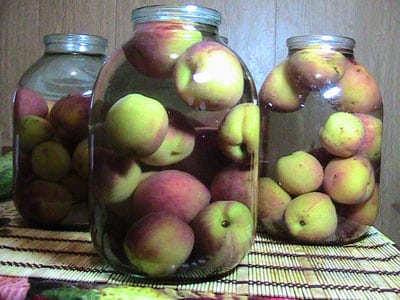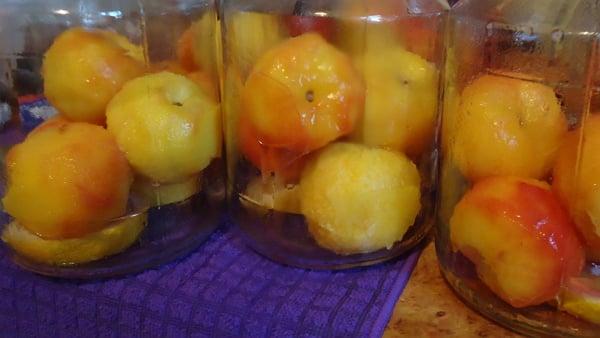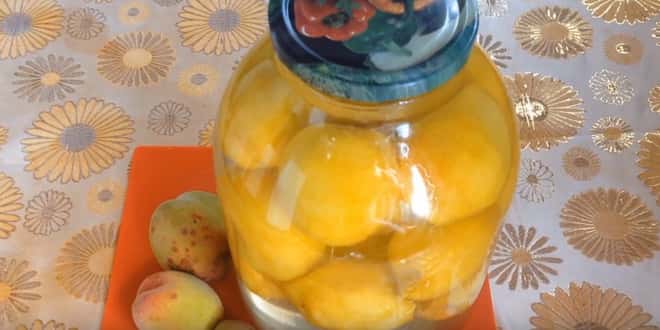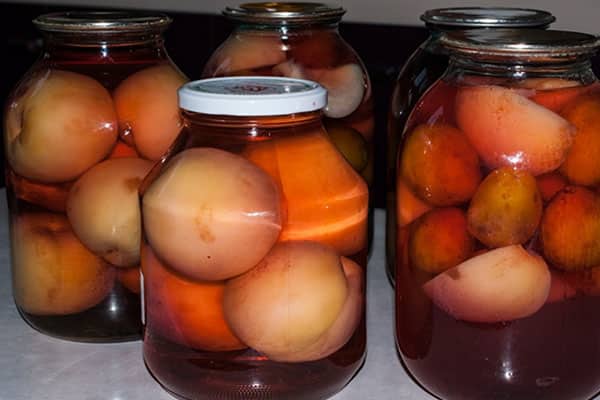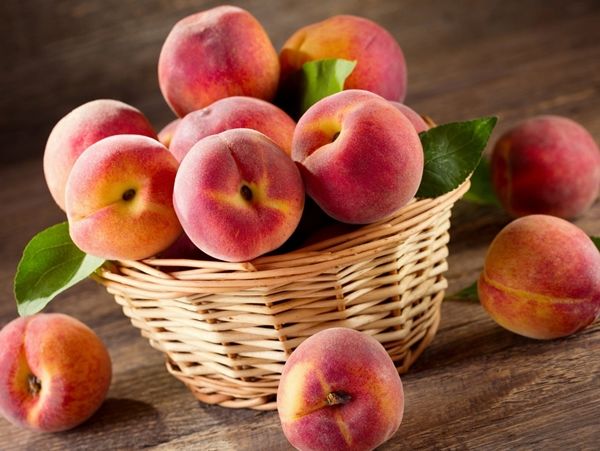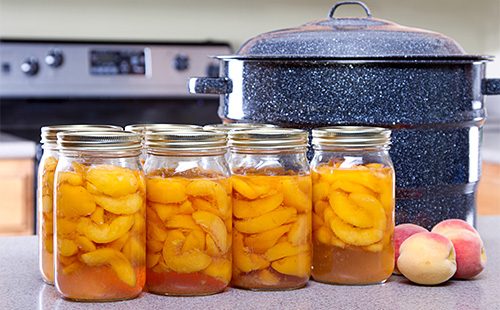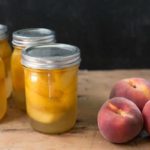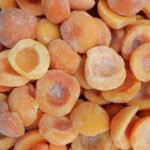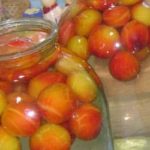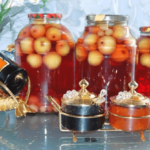Peaches are juicy, aromatic fruits with a delicate taste. They contain a lot of vitamins and minerals. They are good fresh and processed. Their qualities are especially well preserved when canned. Therefore, many housewives prefer to prepare peach compote for the winter. There are many different recipes for its preparation.
Subtleties of cooking
There are a number of features for a peach drink:
- It is better to cut large fruits or sterilize them longer.
- Peach fruits are covered with fluff and, if it is not removed, the compote becomes cloudy.
- For pitted compote, it is better to take varieties in which it separates well.
Otherwise, the cooking rules are no different from other fruits.
Selection and preparation of fruits
To prepare compotes, choose fruits that are not too ripe, without punctures or dents on the skin. Some housewives remove the skin from the fruit. But from this the appearance is lost, the fruit falls apart, and the drink becomes unappetizing.
To make it easier to remove the fluff, the fruits are immersed in a soda solution for 30 minutes. For 1 l. water - 1 tsp. soda
Recipes for making peach compote at home
Every housewife involved in canning has her own signature recipe for preparing peaches.
A simple way for the winter
The easiest way is to put all the components in a vessel and put it to sterilize. Ingredients for a 3-liter jar:
- 8-9 medium fruits.
- Sugar - 250-300 g.
- Water - about 2 liters, depending on the size of the fruit.
For a 1-liter jar, everything is divided by three. With this method, there is no need to sterilize the containers; it is enough to wash them well, and then they are sterilized along with the compote.
Boil the jars in a sterilizer for about 15 minutes, then remove and roll up. This preparation is not capricious and lasts for a long time.
Without sterilization
Some housewives try to prepare canned food without sterilization. To do this, put the fruit in a vessel, pour boiling water over it and leave for 15 minutes. Then the water is poured into a saucepan, boiled again and sugar is added to it.
If large fruits are used, while the syrup is boiling, you can pour boiling water over the fruit again.
Ingredients:
- Peaches - 8-10 pieces.
- Sugar - 200-400 g.
- Water - 1.5-2 l.
Drain the water and let it drain well. Pour syrup over the fruit and seal the jar.
Seedless
You can make the preparation without seeds. If such compote does not go away over the winter, you can leave it for next year, it will not spoil. The drink is made from peach halves. But you can also carefully remove the seed without cutting the fruit completely. This will make it seem like the fruits are intact.
You can preserve seedless fruits in a variety of ways. Some people find it more convenient to sterilize, while others pour boiling syrup over it. Regardless of the method chosen, it is important to screw the jars and place them under a blanket to allow them to cool slowly. This is how the drink “ripens” and subsequently does not shoot.
With a bone
Removing the pit from some varieties of peach is not an easy task. In this case, part of the pulp that has grown into the bone is lost. Therefore, many housewives prefer to make compote with a bone. Whole fruits look more attractive.
Ingredients for a 3-liter jar:
- Peaches - 8-12 pieces, depending on size.
- Granulated sugar - 1-2 cups to taste.
- Water - as much as will go in, about 2 liters.
Compote with bones is made by sterilizing jars. Or pour boiling water over it and then syrup, whichever is more convenient for you.
With citric acid
It is useful to prepare compote without sterilization by pouring boiling water over the fruit. But in order for the jars to stand well and not explode, citric acid is added to the compote.
Ingredients for a 3-liter container:
- 8-9 medium fruits.
- Granulated sugar - 250 g.
- Citric acid - 0.5 tsp.
- Water - about 2 liters, depending on the size of the fruit.
For a liter container, everything is taken three times less. Place the fruits in sterilized containers, add sugar and acid.Fill the jar with boiling water and close with sterilized metal lids.
If canning is done correctly, such a compote turns out fragrant and transparent. In it, vitamin loss is minimized, and the taste of the fruit remains summery.
With apricot
Many people prefer to cook assorted apricots. To do this, take the fruits in equal proportions and put them in a jar whole or after removing the pit.
Ingredients:
- Peaches - 500 g.
- Apricots - 500 g.
- Granulated sugar - 300-500 g.
- Water - 2 l.
Apricots are higher in acidity than peaches, so this recipe uses a little more sugar than usual.
From fig peaches
Compote made from halves of flat fruits turns out well. They easily separate the bone and have a more delicate taste than regular ones. Compote can be made in various ways, described above. Canned food from this variety is delicious in any case.
Nectarine compote
The drink turns out beautiful and tasty when peaches and nectarines are combined. At the same time, peaches must be bald, without fluff, otherwise they will look worse than nectarines.
Ingredients:
- Peaches - 500 g.
- Nectarines -500 g.
- Sugar - 400 g.
- Water -2 l.
If you want to make a full jar, you need to take a kilogram of fruit and a little more sugar.
With plum
Peach compote with plums is good. In addition to its taste, plums also give a beautiful pink color. It is better to take varieties in which the pit is separated and cook the preserved food without the pit. Take fruits in equal proportions, put them in jars, pour in syrup and sterilize as usual.
With apples
It is better to peel and cut apples for the drink into slices. Small varieties can be used whole. The amount of sugar is set depending on the taste and acidity of the apples.
With blackberries
Blackberries add color and aroma to the drink. They put on the jar:
- 1 cup blackberries.
- 1 kg of peaches.
- 0.5 tsp. citric acid or juice of 1 lemon.
It is better to preserve by pouring syrup, so the berries will not fall apart.
How to store compote
The canned drink is stored in the basement or pantry. Storage time - from a year with a stone and up to three years without.



